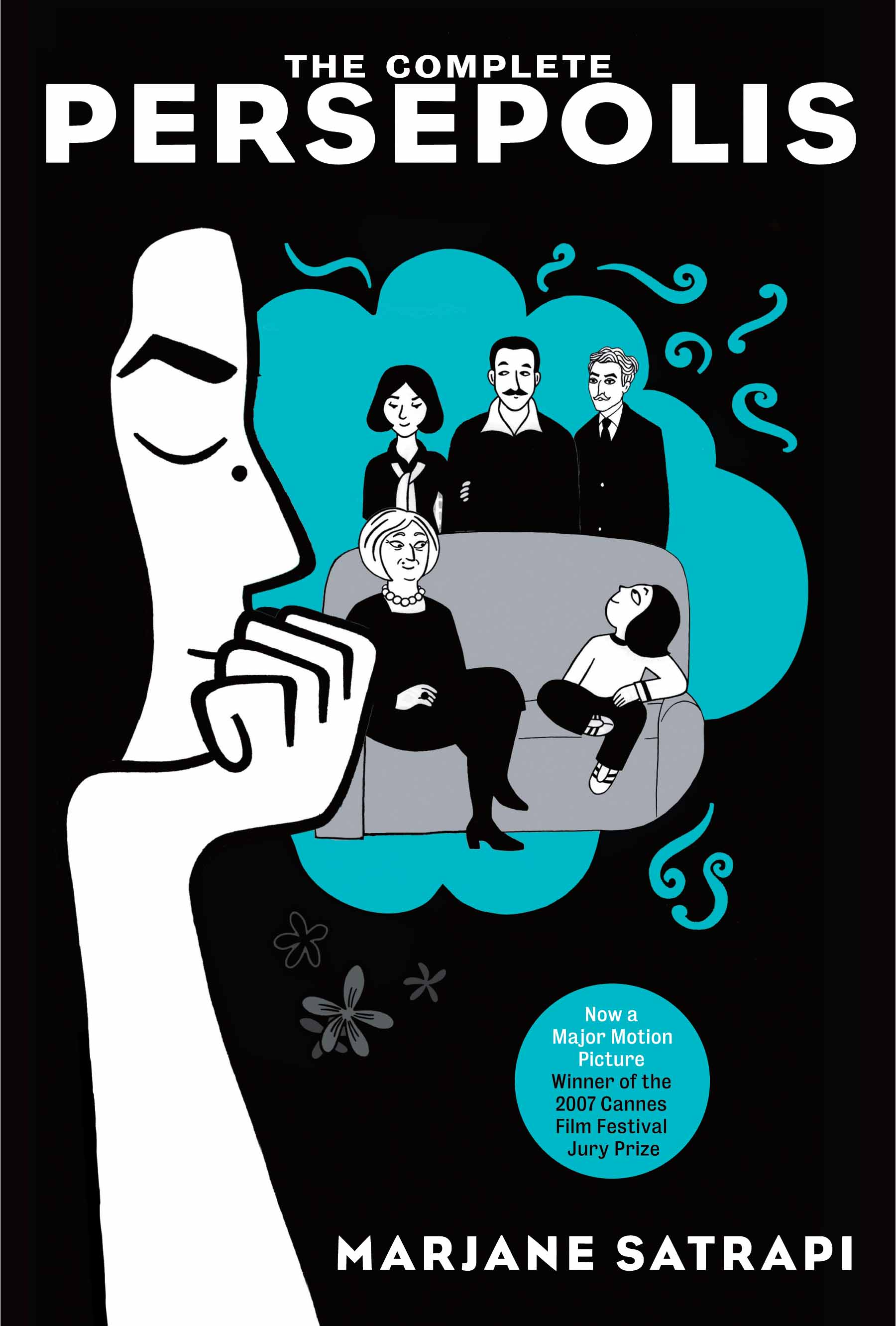 While I have read and reviewed historical fiction set in Iran/Persia (The Blood of Flowers, for example), I have heretofore avoided contemporary Iranian fiction in much the same way that I typically avoid contemporary fiction from any other part of the world. I just find the past more interesting than the present!
While I have read and reviewed historical fiction set in Iran/Persia (The Blood of Flowers, for example), I have heretofore avoided contemporary Iranian fiction in much the same way that I typically avoid contemporary fiction from any other part of the world. I just find the past more interesting than the present!
Nonetheless, when The Complete Persepolis showed up in the Green Man mailroom a while ago, I thought I’d give it a try. I was intrigued for at least two reasons: one, it’s a memoir (in that sense akin to The Man in the Sharkskin Suit); two, it’s formatted like a graphic novel. Actually, in that sense it reminded me of a piece I read in a recent issue of Harper’s Magazine, about a couple of American enlisted men trying to train a group of Iraqi irregulars. I am not sure I would have read that story if it had been straight narrative, but with pictures and text, it worked. So does Persepolis.
Marjane Satrapi is a writer and illustrator born in Tehran in 1970, when Shah Mohammad Reza Pahlavi was still ruler of Iran. Marjane’s father was a civil engineer, her mother was a great-granddaughter of Nasser Al-Din, Shah of Persia from 1848-1896 (now there’s a long reign for you!). His son, Marjane’s maternal grandfather, became a Communist, and I would hazard a guess that Marjane’s political beliefs place her on the left side of the hall.
An only child, Marjane was clearly precocious and just slightly obnoxious. (I can say that because I was all those things, too!) It appears that her family was comfortably well-off. They had a servant and a nice car and a nice apartment in a nice neighborhood. I would say they were also fairly Westernized and not devout practitioners of Islam. The young Marjane has conversations with God, whom she draws as an old man with a beard who sometimes holds her on his lap when she needs comforting.
Persepolis relates events of Marjane’s childhood, adolescence and young adulthood, living through the so-called Islamic Revolution and the Iran-Iraq War. It’s sometimes mordantly funny, but more often scary and sad. She and members of her very secular family are often arrested or otherwise persecuted for engaging in activities that violate the rules of the Islamic republic – like neglecting to wear a veil in public, or serving wine at parties. Her beloved uncle Anoosh returns from exile in the Soviet Union only to be arrested and imprisoned as a Russian spy.
In 1984, when Marjane was 14, her parents sent her to school in Austria, fearing that she would not be able to continue her education in Iran (needless to say, she often got in trouble in school for asking too many questions!). I would like to say that her life improved there, but she went from an Islamic girls’ school to a Catholic girls’ school, from living with loving, if exasperated parents, to living first with a family friend, then in at the school, then in a variety of situations with friends and lovers and finally landing for a while on the street. She grew tall, cut her hair, experimented with drugs, tried wearing different clothing styles, and finally ran out of money. Feeling like the proverbial stranger in a strange land, she returned to Tehran at age 18 – where she really felt like a stranger in a strange land! Nonetheless, she managed to re-establish ties with her family and some of her old friends. She attended art school, got involved, even got married — for a while.
It’s evident from Satrapi’s artwork that she has some experience illustrating children’s books. The black and white drawings are simple, yet quite powerful. They are laid out in blocks on the book’s pages. Some pages contain just one drawing, others contain as many as eight or nine. Satrapi manages to convey a great deal of information in these drawings, combined with just a very little text, most often drawn in balloons over the characters’ heads. I’ve mentioned already her drawings of her child-self talking to god. I also liked the way she portrayed the women in their long black chadors, the so-called guardians of the revolution with their black beards.
The Complete Persepolis started out in France as four separate books, cleverly titled Persepolis 1 – Persepolis 4. When Pantheon initially released the English translation in the United States, they combined the book into two volumes. The present edition, which combines both of those, is about 350 pages long — but a fast read because of the relatively small amount of text on every page. It was apparently released to coincide with the 2007 release of the animated feature film version. Can’t wait to see that.
(Pantheon Books, 2007)
